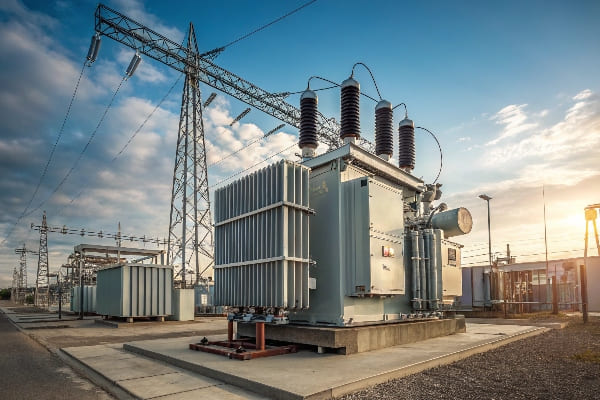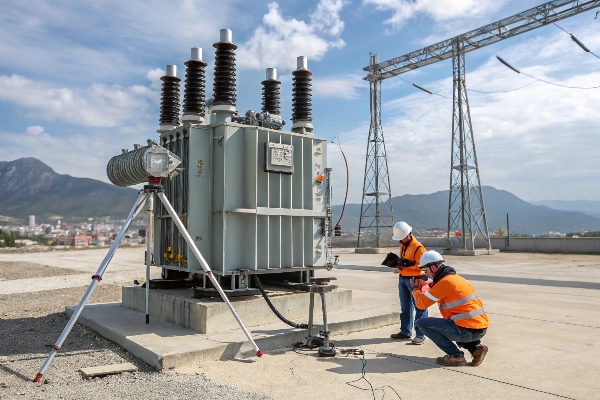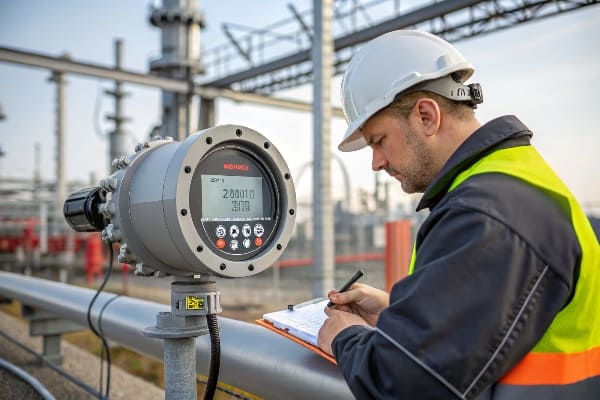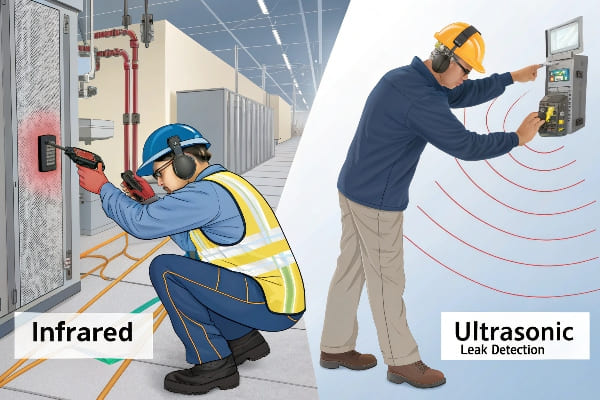Transformer Oil Problems: 5 Dangerous Fluctuation Patterns & Fixes (2025 Guide)
Is your transformer oil behaving erratically? You might be sitting on a ticking time bomb. Ignoring these fluctuations could lead to catastrophic failures and costly downtime.
This guide explores five dangerous transformer oil fluctuation patterns and provides practical fixes. We’ll cover sudden oil drops, false sensor readings, thermal expansion issues, leak detection methods, and advanced monitoring techniques to help you maintain optimal transformer performance.

As someone who’s spent years troubleshooting transformer oil issues, I’ve seen how these problems can escalate quickly. Let’s dive into the critical patterns you need to watch out for and how to address them effectively.
Sudden Oil Drop Alert: 3 Critical Faults You Can’t Afford to Ignore?
Have you ever noticed a sudden, unexplained drop in your transformer’s oil level? This isn’t just a minor inconvenience – it’s a red flag that demands immediate attention.
Sudden oil drops in transformers often indicate serious issues such as leaks, internal faults, or rapid oil degradation. The three most critical faults to watch for are tank ruptures, gasket failures, and severe internal arcing. Ignoring these can lead to catastrophic transformer failure.

In my years of experience, I’ve encountered numerous cases of sudden oil drops. Here are the three most critical faults you absolutely can’t afford to overlook:
1. Tank Ruptures
Tank ruptures are perhaps the most alarming cause of sudden oil drops. They can occur due to:
- Internal pressure buildup from fault gases
- External physical damage
- Corrosion weakening the tank structure
Signs to watch for:
- Visible oil leaks or stains on the transformer exterior
- Unusual bulging or deformation of the tank
- Sudden, significant drop in oil level (often more than 10% in a short time)
Immediate actions:
- De-energize the transformer immediately
- Contain any oil spills to prevent environmental contamination
- Inspect the tank thoroughly for visible damage
- Prepare for emergency repairs or replacement
2. Gasket Failures
Gasket failures are a common yet often overlooked cause of oil leaks. They can result from:
- Age-related deterioration
- Improper installation or maintenance
- Thermal cycling stress
Indicators of gasket failure:
- Slow but steady oil level decline
- Oil seepage around joints, particularly at the top cover
- Increased gas-in-oil levels due to air ingress
Steps to address:
- Identify the specific location of the leak
- Plan for a controlled shutdown if possible
- Replace faulty gaskets with high-quality, compatible materials
- Perform a vacuum oil fill to remove any ingressed air
3. Severe Internal Arcing
Internal arcing is perhaps the most dangerous fault, as it can lead to explosive failure. It’s often caused by:
- Insulation breakdown
- Winding displacement
- Severe overloading
Warning signs:
- Rapid oil level drop accompanied by gas buildup
- Activation of Buchholz relay or sudden pressure relay
- Abnormal DGA results, particularly high levels of acetylene
Critical response:
- Immediately remove the transformer from service
- Perform emergency DGA to confirm arcing
- Prepare for internal inspection and possible rewind or replacement
| Fault Type | Oil Drop Rate | Other Indicators | Urgency Level |
|---|---|---|---|
| Tank Rupture | Very Fast (hours) | Visible damage, oil stains | Extreme |
| Gasket Failure | Slow to Moderate (days to weeks) | Localized seepage | High |
| Internal Arcing | Rapid (minutes to hours) | Gas alarms, relay trips | Extreme |
I once encountered a case where a utility ignored a slow oil level decline, attributing it to normal consumption. Within weeks, the drop accelerated, and we discovered multiple gasket failures that had allowed significant moisture ingress. The resulting insulation degradation nearly led to a catastrophic failure. This experience taught me the importance of treating even minor oil level changes seriously.
Key Takeaways for Sudden Oil Drops:
- Regular Monitoring: Implement daily oil level checks and trend analysis.
- Quick Response: Have an emergency response plan ready for sudden drops.
- Root Cause Analysis: Always investigate the underlying cause, even after addressing the immediate issue.
- Preventive Maintenance: Schedule regular gasket inspections and replacements.
- Advanced Monitoring: Consider implementing real-time oil level monitoring systems with alarms.
Remember, a sudden oil drop is never "normal." It’s a critical warning sign that requires immediate attention. By understanding these three major faults and their indicators, you can protect your transformers from catastrophic failures and ensure the reliability of your power system.
Oil Level Sensor Lies: How to Spot False Readings in 5 Minutes?
Have you ever made a crucial decision based on oil level readings, only to find out later they were completely wrong? False sensor readings can lead to unnecessary shutdowns or, worse, overlooked critical issues.
Oil level sensor inaccuracies can result from calibration errors, mechanical failures, or environmental factors. To spot false readings quickly, compare sensor data with visual inspections, check for sudden unexplained changes, and verify readings across multiple sensors if available.

As someone who’s dealt with numerous sensor failures, I’ve developed a quick 5-minute check to spot these deceptive readings. Here’s my foolproof method:
1. Visual Cross-Check (1 minute)
Start with a simple visual inspection:
- Compare the sensor reading to the oil level gauge on the transformer
- Look for any obvious discrepancies
Quick Tip: Always trust your eyes over digital readouts if there’s a significant difference.
2. Trend Analysis (1 minute)
Pull up recent historical data:
- Look for any sudden, unexplained jumps or drops in readings
- Normal oil levels typically change gradually
Red Flag: Any change of more than 2% in a 24-hour period without operational changes warrants investigation.
3. Environmental Factor Check (1 minute)
Consider external influences:
- Check recent temperature fluctuations (oil expands in heat)
- Verify if recent maintenance or oil top-ups have been performed
Remember: A 10°C temperature change can cause a 1% change in oil volume.
4. Multi-Sensor Verification (1 minute)
If your transformer has multiple sensors:
- Compare readings across all available sensors
- Look for any outliers
Best Practice: Install at least two independent level sensors for critical transformers.
5. Quick Sensor Diagnostics (1 minute)
Perform a rapid sensor health check:
- Check for loose connections or visible damage
- Verify power supply to the sensor is stable
Pro Tip: Many modern sensors have built-in self-diagnostic features. Learn how to access these for your specific models.
| Check | What to Look For | Potential False Reading Cause |
|---|---|---|
| Visual Inspection | Mismatch with gauge | Sensor calibration error |
| Trend Analysis | Sudden changes | Sensor malfunction or data transmission issue |
| Environmental Factors | Unexplained variations | Temperature effects or recent maintenance |
| Multi-Sensor Comparison | Outlier readings | Individual sensor failure |
| Sensor Diagnostics | Physical issues | Damage or power supply problems |
I once encountered a situation where a critical transformer was nearly shut down due to a false low oil level reading. By quickly running through these checks, we discovered that a recent software update had reset the sensor’s calibration. This 5-minute process saved the facility from hours of unnecessary downtime and potential equipment damage from an unneeded oil top-up.
Key Strategies for Maintaining Sensor Accuracy:
-
Regular Calibration:
- Schedule sensor calibrations at least annually
- Calibrate immediately after any maintenance that could affect oil levels
-
Sensor Redundancy:
- Install multiple sensor types (e.g., float-based and pressure-based)
- Use voting systems for critical applications to ignore outlier readings
-
Integrated Monitoring Systems:
- Implement systems that cross-check sensor data with other transformer parameters
- Set up smart alarms that trigger only when multiple indicators suggest an issue
-
Staff Training:
- Ensure all operators know how to perform quick sensor verifications
- Conduct regular drills on responding to oil level alarms
-
Documentation:
- Keep detailed records of sensor behavior and any false readings
- Use this data to identify patterns and predict potential sensor issues
Remember, while sensors are invaluable tools, they’re not infallible. This 5-minute check can save you from making costly mistakes based on false readings. Always approach sensor data with a critical eye, and never hesitate to verify readings through multiple methods. Your transformer’s health – and your peace of mind – depend on it.
The Bubble Effect: Why Summer Heat Waves Create Fake Oil Shortages?
Have you ever panicked over a sudden oil level drop during a heatwave, only to find it mysteriously "fixed" itself later? You’re not alone. The "Bubble Effect" is a common summer phenomenon that can trick even experienced engineers.
Summer heat waves can cause transformer oil to expand and create gas bubbles, leading to apparent oil shortages. This ‘Bubble Effect’ is due to thermal expansion of oil, increased gas solubility at higher temperatures, and potential moisture vaporization. Understanding this phenomenon is crucial for accurate oil level management.

As someone who’s weathered many summer maintenance seasons, I’ve seen the Bubble Effect cause unnecessary alarm and costly interventions. Let’s break down this phenomenon and how to handle it:
Understanding the Bubble Effect
-
Thermal Expansion of Oil:
- Transformer oil expands as temperature rises
- Can lead to apparent increase in oil level
-
Gas Solubility Changes:
- Higher temperatures reduce gas solubility in oil
- Dissolved gases can form bubbles, creating a false low oil level
-
Moisture Vaporization:
- Any water in the oil can vaporize, forming steam bubbles
- These bubbles can displace oil, affecting level readings
The Impact of Temperature on Oil Volume
| Temperature Increase | Approximate Oil Expansion |
|---|---|
| 10°C (18°F) | 0.7% volume increase |
| 20°C (36°F) | 1.4% volume increase |
| 30°C (54°F) | 2.1% volume increase |
Note: These are approximate values and can vary based on oil type and initial temperature.
I once consulted for a utility that was consistently topping up transformer oil every summer, thinking they had a chronic leak. After implementing proper temperature compensation in their monitoring system, we discovered they were actually over-filling due to misunderstanding the Bubble Effect. This led to unnecessary costs and potential overloading of the oil expansion system.
Strategies to Manage the Bubble Effect
-
Temperature-Compensated Monitoring:
- Implement monitoring systems that adjust for temperature changes
- Use the formula: Compensated Volume = Measured Volume / (1 + β(T – T_ref))
Where β is the volumetric expansion coefficient of the oil
-
Trend Analysis:
- Track oil levels over time, correlating with temperature changes
- Look for patterns that match expected thermal expansion
-
Gas Analysis:
- Conduct regular dissolved gas analysis (DGA) to monitor gas content
- Be aware that heat can cause temporary increases in gas levels
-
Pressure Monitoring:
- Monitor internal pressure changes
- Sudden pressure drops can indicate bubble formation
-
Visual Inspections:
- Use sight glasses or transparent oil level indicators
- Look for visible bubbles or frothy oil
Best Practices for Summer Oil Management
-
Establish Baseline Readings:
- Record oil levels at various temperatures during normal operation
- Use these as reference points for future comparisons
-
Adjust Alarm Thresholds:
- Set wider alarm margins during summer months
- Use temperature-compensated alarms when possible
-
Cooling System Maintenance:
- Ensure cooling systems are functioning optimally before heat waves
- Consider upgrading cooling capacity for chronically hot transformers
-
Oil Preservation Systems:
- Check and maintain oil preservation systems (e.g., conservators, nitrogen blankets)
- These systems help manage oil expansion and contraction
-
Staff Training:
- Educate maintenance teams about the Bubble Effect
- Provide guidelines for distinguishing between thermal effects and real issues
Remember, while the Bubble Effect can create alarming scenarios, it’s a natural phenomenon that can be managed with proper understanding and systems. By implementing these strategies, you can avoid unnecessary interventions and ensure your transformers operate safely and efficiently, even during the hottest summer days.
Infrared vs Ultrasonic: Best Tools for Detecting Hidden Oil Leaks?
Are you tired of playing hide-and-seek with elusive transformer oil leaks? The choice between infrared and ultrasonic detection could make or break your maintenance strategy. Let’s settle this tech showdown once and for all.
Infrared cameras detect oil leaks by identifying temperature differences, while ultrasonic detectors pinpoint leaks through sound. Infrared is best for large-scale scans and identifying hot spots, while ultrasonic excels at detecting small, pressurized leaks. The most effective approach often combines both technologies.

As someone who’s tracked down countless sneaky leaks, I’ve learned the strengths and weaknesses of both methods. Let’s dive into a detailed comparison:
Infrared Technology
Pros:
- Covers large areas quickly
- Detects temperature anomalies that may indicate leaks
- Can identify issues before visible leaks occur
Cons:
- May miss small leaks if temperature difference is minimal
- Can be affected by ambient temperature and reflective surfaces
- Relatively expensive equipment
Best For:
- Large transformer inspections
- Identifying general problem areas
- Detecting hot spots that may lead to leaks
Ultrasonic Technology
Pros:
- Highly sensitive to small, pressurized leaks
- Not affected by ambient temperature
- Can detect leaks in hard-to-reach areas
Cons:
- Requires close proximity to leak source
- Can be affected by background noise
- May miss slow, non-pressurized leaks
Best For:
- Pinpointing exact leak locations
- Detecting small, high-pressure leaks
- Inspecting noisy environments where visual inspection is difficult
Comparison Table
| Feature | Infrared | Ultrasonic |
|---|---|---|
| Detection Method | Temperature differences | Sound of escaping fluid |
| Range | Long (can scan large areas) | Short (requires close proximity) |
| Sensitivity | Moderate to High | Very High |
| Best Conditions | Cool ambient temperatures | Any temperature, low background noise |
| Cost | Higher | Lower |
| Skill Required | Moderate | Low to Moderate |
I once worked on a transformer that had baffled maintenance teams for months with a mysterious oil loss. Infrared scans showed no clear hot spots, but when we brought in ultrasonic equipment, we quickly located a pinhole leak in a welded seam – a spot that had been overlooked in visual inspections. This experience taught me the value of combining technologies for comprehensive leak detection.
Best Practices for Leak Detection
-
Combine Technologies:
- Use infrared for initial, broad-area scans
- Follow up with ultrasonic for precise leak location
-
Regular Scanning Schedule:
- Conduct infrared scans monthly or quarterly
- Perform ultrasonic checks on suspect areas identified by infrared
-
Create Thermal Baselines:
- Develop thermal images of transformers under normal conditions
- Use these as references to spot anomalies quickly
-
Ultrasonic Technique Tips:
- Use a "gross to fine" approach, scanning broadly then zeroing in
- Listen for a rushing sound that intensifies near the leak
-
Environmental Considerations:
- Conduct infrared scans during cooler parts of the day for best results
- Shield ultrasonic detectors from wind when working outdoors
-
Data Integration:
- Correlate leak detection data with oil level trends and DGA results
- Look for patterns that might indicate developing issues
-
Staff Training:
- Ensure technicians are well-versed in both technologies
- Conduct regular refresher training and calibration checks
Remember, the choice between infrared and ultrasonic isn’t always an either/or decision. The most effective leak detection strategies often involve using both technologies in a complementary manner. By understanding the strengths and limitations of each method, you can develop a comprehensive approach that catches leaks early, saving time, money, and preventing potential disasters.
Conclusion
Effective transformer oil management is crucial for maintaining reliable power systems. By understanding oil fluctuation patterns, implementing proper monitoring techniques, and utilizing advanced detection methods, you can prevent costly failures and extend transformer life. Stay vigilant and proactive in your maintenance approach.
Free CHBEB Transformer Catalog Download
Get the full range of CHBEB transformers in one catalog.
Includes oil-immersed, dry-type, pad-mounted, and custom solutions.
Quick Message
Request A free quote
We'd like to work with you
- +86 15558785111
- [email protected]
- +86 15558785111
What We Do
CHINA BEI ER BIAN (CHBEB) GROUP, with 218 million in registered capital, originated from Beijing Beierbian Transformer Group. Headquartered in Beijing for R&D, it operates major production bases in Nanjing and Yueqing, producing high-quality products.
Latest Product
address
BeiJing
No 3,RongJing East Road,BeiJing Economic Technological Development Area,BeiJing,China
JiangSu
No 7️Xiangfeng Road,Jiangning,NanJing,JiangSu,China
WenZhou
No.211, Wei 16 Road, Industrial Zone, Yueqing, Wenzhou, Zhejiang, China.
XiangYang Industrial Zone ,YueQing,WenZhou,ZheJiang,China
contact us
- [email protected]
- +86 13057780111
- +86 13057780111
- +86 15558785111
Copyright © Bei Er Bian Group


